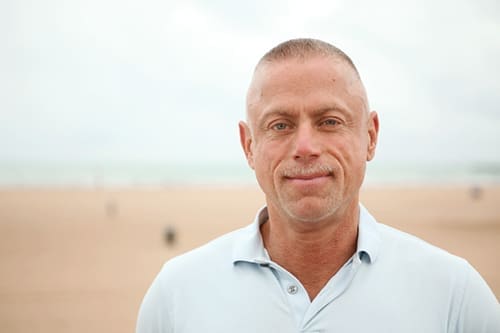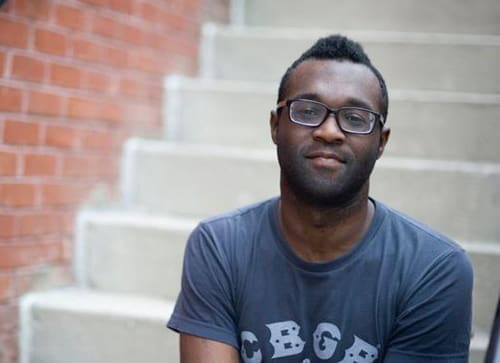By Tristan Cabello
Bronzeville is often thought of as one of Chicago’s most prominent, African-American neighborhoods, but it was also home to a vibrant, well-accepted queer culture that emerged in the 1920s. From State Street to Cottage Grove Avenue, along 43rd and 47th Street, Bronzeville’s commercialized and jazz-influenced urban culture offered African-American queers several venues where individuals interacted across the color line (the Plantation Café, the Pleasure Inn, the Cabin Inn, Club DeLisa and Joe’s Deluxe), attended yearly popular Halloween “Drag Balls” popularized by Black gay hustler Alfred Finnie, visited semi-safe locations (the Wabash YMCA, The First Church of Deliverance, Washington Park, Jackson Park), and patronized a “vice district.” Bronzeville’s most powerful inhabitants (Reverend Clarence Cobb and Reverend Mary G. Evans) and its most famous musicians (Tony Jackson, Rudy Richardson, Sippie Wallace, Frankie “Half-Pint” Jaxon, and George Hannah) were queer. On the streets, working-class queer African Americans (drag entertainers, for example) were respected because of their relatively well-paying jobs, which often enabled them to provide for their families’ needs.
During the Great Migration, Bronzeville’s queer population grew rapidly. In an environment of relative sexual freedom, African Americans in Bronzeville could establish relationships with members of the same sex. Blues pianist Antony Jackson was one of the many queer migrants who left their native South to take advantage of Chicago’s freedom. Born in New Orleans in 1876, Jackson spent his youth in saloons, gambling halls, and brothels in the Black neighborhood of Storyville. Despite his great popularity as a musician, Jackson often complained about the tough queer life in New Orleans. In search of a place of residence more receptive to his music and sexual orientation, the musician migrated to Chicago in 1908.
Along with several other gay blues singers, queer female blues singers also enjoyed a great popularity in Bronzeville’s cabarets in the twenties and thirties. Blues singers, such as Gladys Bentley, Alberta Hunter, and ‘Ma’ Rainey, often performed in Chicago and had recorded numerous sexually explicit songs that included descriptions of queer acts. In “Sissy Man Blues,” a traditional tune recorded by numerous male blues singers, the singer demanded, “If you can’t bring a woman, bring me a sissy man.” The blues reflected a culture that accepted sexuality, including queer acts and identities, as a natural part of life.
Female impersonators (a term widely used in the 1930s-1950s to describe Drag performers) also enjoyed a great popularity due to the “Drag Balls” organized every Halloween and New Year’s Eve. The official “approval” was made possible by the fact that the events regularly took place on those holidays, and thus for official purposes, were able to pass as conventional masquerade balls. The first Chicago balls were also racially integrated, a fact frequently remarked upon by those who attended or wrote about them. The most famous of these Drag Balls were the first Finnie’s balls, the first of which occurred in 1935 and were organized by a Black gay street hustler and gambler named Alfred Finnie, in the basement of a tavern on the corner of 38th street and Michigan Avenue. Guests of the ball only paid twenty-five cents to attend.
A Black Queer Subculture Emerges, Faces Anti-Queer Media Campaign
Following the Second World War a few years later, a segregated African-American queer subculture emerged in Bronzeville. The migration of queer people to Chicago gave rise to an increase of North Side gay bars from which Blacks were often excluded. By the mid-forties, most of Bronzeville’s former queer-friendly nightclubs had become exclusively African-American gay clubs (example: The Kitty Kat Club).
During the Civil Rights movement, Bronzeville’s Black queer residents also became politically active in a range of activities that expanded queer culture beyond entertainment settings. African-American gay men undertook responsibilities in the Student Nonviolent Coordinating Community and the Congress of Racial Equality. Many African-American lesbians, by contrast, participated in the Chicago Women’s Liberation Movement.
As the civil rights movement became more popular in the 1950s, a campaign to regulate the sexuality of the working class was launched with the publication of several articles in Ebony, such as the one written by U.S. Rep. Adam Clayton Powell Jr. titled “Sex in the Church.” Nine months after Powell’s article, Ebony shifted its views on queer people and culture with an article on Gladys Bentley. This article, titled “I am woman again,” read that “like a great number of lost souls, Bentley inhabited the half shadow no-man’s land which exists between the boundaries of the two sexes, she was a sad and lonely person and that she had found the love of real man.”
From that moment on, Ebony Magazine and Jet Magazine replaced their articles on the Drag Balls with a “Family” section. The magazines’ publisher John Johnson recalled that his decision to “play down sensationalism and sex” was compelled by the emergence of a new race consciousness. The Chicago Defender soon followed the same trend. In 1957, the Chicago Defender announced that it would publish a series of articles on the “third sex,” which cast aside its longstanding relationship with Bronzeville’s queer community and female impersonators.
Additional Black Queer Enclaves Form Beyond Bronzeville
By the sixties and seventies, African-American queers had shaped a well-defined community with distinct spaces, codes, and language beyond just Bronzeville. Hyde Park, South Shore, and the southern part of Grant Park became queer enclaves. Clubs such as the Kabbutz or the Jeffery Pub, were staples in Chicago’s African-American gay bar culture. Third World Studios of Chicago distributed a magazine devoted to African-American gay males. Queers had access to the local Black media. As early as February 1978, talk show host Ouida Lindsey interviewed two Black gay men about the challenges of being African-American and gay on her successful WFLD prime-time talk show.
In the meantime, African-American and white gays and lesbians had started to work in different political directions. The Chicago Gay Liberation movement had gained cultural exposure despite ongoing tensions between Blacks and whites. A Black Caucus, which later became The Third World Gay Revolution, formed within the Chicago Gay Liberation to address the specific concerns of African-American lesbians and gay men.
Black Queer Activists Join Initial Fight Against HIV Epidemic
Chicago’s Black queer activists were also involved in the fight against HIV and AIDS early in the epidemic. Upon the Chicago Black Gay Christian Conference, David Wright, president of the Chicago Chapter of the National Coalition for Black Gays, began offering HTLV (the first name given to HIV) education and prevention to Chicago’s African-American gay community. A small but strong grassroots support and activist system provided safe spaces available for people living with HIV and AIDS to disclose their sexuality and status. In September 1983, the African-American radio network WVON broadcasted a five-part series on AIDS.
Still, the disease was silenced in the more mainstream media. The passing of several artists who were fixtures in the local African-American gay community in the early eighties amplified this silent accommodation. While many Gay South Siders knew choreographer Joseph Holmes or disco singer Keith Barrow had died due to complications of AIDS, their status was not discussed publicly at the time of their deaths.
The AIDS epidemic strengthened the sense of a fragmented community. The story of the Kupona Network group, an AIDS organization that worked with Black institutions such as churches or schools in order to prevent new HIV transmissions, is telling. In 1986, the Kupona Network divided into two factions, one merging with larger North Side white-dominated organizations and another one remaining on the South Side, to help African Americans living with the virus. A member of the South Side division declared in the gay newspaper the Windy City Times that “larger gay agencies [would] never reach the Black community because Blacks [were] not a functioning part of these organizations and agencies and because most [were] located on the North Side, away from the majority of the Black, community.”
Ultimately, the Civil Rights movement, the Gay Liberation Movement and the AIDS epidemic were major events that fueled the segmentation of Chicago’s Black queer cultures and led to an increase visibility of the culture’s diversity. Many Black queers evolved beyond the urban boundaries of their home cultures. Some aligned with larger North-Side organizations. Others remained on the South Side of Chicago. Many evolved between the two, and beyond, rendering the community’s diversity in class, gender identities, and sexual preferences even more perceptible. So, when you think of Bronzeville now, remember its queer history and evolution.
Tristan Cabello received his PhD in History from Northwestern University and is currently Associate Director of the Master of Liberal Arts at Johns Hopkins University. To learn more about the history of Chicago’s South Side gays and lesbians and see a bibliography, visit Tristan’s digital exhibit.


